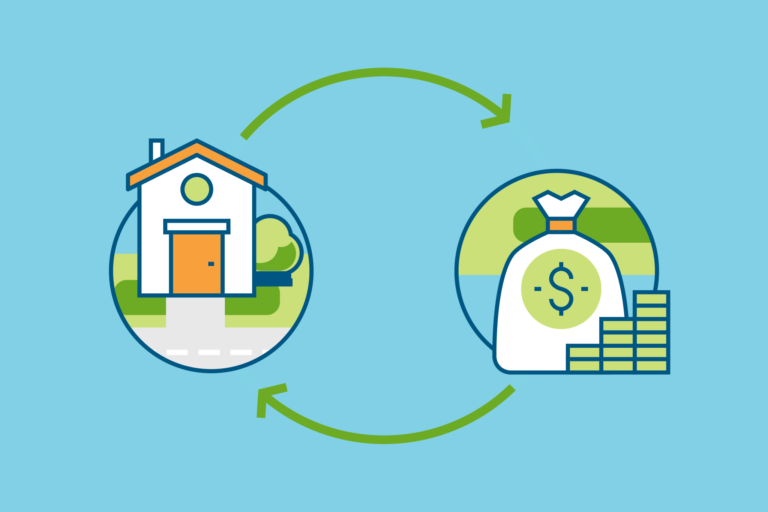A DSCR (Debt Service Coverage Ratio) loan is investment‑property financing based on the rental income the property generates. It’s commonly used by real estate investors with stable cash‑flowing rentals.
- Main Benefit: Qualify based on property cash flow, not personal income or employment history.
- Primary Concern: Requires high down payment and typically higher interest rates and fees.
- Best For: Investors buying income‑producing rentals seeking scalable financing.
- Important Note: Property must maintain strong net operating income and minimal vacancies.
Comprehensive List of Pros and Cons of DSCR Loans
Below is a table listing exactly 30 pros and 30 cons, based on authoritative sources, to help investors fully evaluate DSCR loan strengths and drawbacks.
| Pros | Cons |
|---|---|
| Approval based solely on property cash flow | Typically requires 20–25% (or more) down payment |
| No personal income verification needed | Interest rates higher than conventional loans (often ~1–2% premium) |
| Simplified documentation compared to traditional mortgages | Origination and underwriting fees tend to be higher |
| Faster approval and closing timelines | Often includes prepayment penalties |
| Unlimited number of eligible rental properties | Loan‑to‑value ratios limited to ~75–80% |
| Can finance different property types: single‑family, multifamily, short‑term rentals | Not available for owner‑occupied primary residences |
| Accessible to investors with complex or inconsistent personal income | Requires minimum credit score (typically 620–680+) |
| Possibility of larger loan amounts tied to NOI | Minimum loan amounts often $100K–150K |
| Maintains investor liquidity—doesn’t require paying in cash | Drops in rental income or vacancies can trigger default risk |
| Investors retain cash reserves for other investments | Cash flow fluctuations make approval less sustainable |
| Can be issued to LLC entities rather than individuals | Fixer‑upper properties often not approved |
| Policies more flexible than conforming loan limits | Stricter DSCR minimum thresholds (1.2–1.5) |
| No federal consumer protections—program flexibility | Less borrower protection than government‑backed mortgages |
| Some lenders approve based on deal quality even if ratios slightly low | Portfolio leveraged heavily may lead to overexposure |
| Cash‑out refinancing often allowed | Higher risk of foreclosure if cash flow drops |
| Enables scaling by stacking multiple properties | Requires careful vacancy planning and reserves |
| May offer interest‑only periods on 30‑year term | Adjustable‑rate versions can increase payment risk |
| Useful for self‑employed and complex income borrowers | Unpredictable markets affect property income stability |
| Lenders may underwrite manually with flexibility | Appraisal must confirm income, condition, location |
| Good for stabilized, long‑term rental assets | Not suitable for value‑add or short‑term flips |
| Debt service cushion encourages lower risk deals | Mandatory cash reserves (3–6 months) by many lenders |
| Lenders accept higher DSCR for better terms | May cap financing size per property ($1‑3M typical) |
| Can be used for widescale portfolio expansion | Unique property types sometimes excluded |
| Streamlined underwriting reduces paperwork burden | Borrower must maintain property performance continuously |
| May allow refinancing of existing rentals | Borrower bears all market and regulatory risk |
| No requirement for employment history documentation | Climate risk regulations may affect NOI in some regions |
| Enables investors with many write‑offs to qualify | Loan approval tied tightly to current operating income |
| DSCR >1.25 often yields lower interest rates | Declining rents reduce DSCR and available equity |
| Portfolio cross‑collateralization may lift marginal assets | Limited refinance flexibility in low income periods |
| Can serve as bridge financing until NOI improves | Larger closing and appraisal costs upfront |
| Supports purchases in LLC for liability protection | Not always eligible with seasonal income variability |
DSCR Loan Market & Usage Statistics
This table presents market size, growth rates, loan usage volumes and typical performance indicators related to DSCR loans in real estate investment.
| Statistical Analysis & Market Data | |
|---|---|
| Annual DSCR loan originations (US, 2024) | $15 billion in investor real estate financing |
| Average DSCR ratio required by lenders | 1.25× minimum (common), 1.0× in some flexible cases |
| Typical down‑payment requirement | 20 % to 30 % of property value |
| Average interest rate premium vs conventional | Approximately 0.5 % to 1.0 % higher |
| Minimum credit score expected | Between 620 and 680 in most cases |
| Average underwriting time | 5 to 14 days (some lenders fund under 5 days) |
| Percentage of loans without income documentation | Up to 80 % of DSCR loans omit borrower income proofs |
| Loan-to‑value ratio (CLTV) cap | Up to 80 % (75 % for cash‑out refinance) |
| Vacancy buffer in DSCR calculation | Typically 5 % contingency deducted from projected rent |
| Portfolio scaling potential | No limit on number of qualifying properties per borrower |
DSCR Loan Technical & Qualification Requirements
This table details eligibility criteria, required metrics, documentation and property suitability conditions for DSCR loans.
| Technical Specifications & Requirements | |
|---|---|
| DSCR calculation method | NOI ÷ annual debt service (principal + interest + taxes & insurance) |
| Minimum DSCR threshold | 1.25× common; some accept 1.0× if NOI strong |
| Permitted property types | Single‑family, 2–4 units, short‑term rentals; non‑owner occupied only |
| Minimum loan amount | Usually $100 000 to $150 000 |
| Appraisal requirement | Required except sometimes waived under $400 K loans |
| Credit score requirement | Typically ≥ 620, preferably ≥ 680 |
| Loan‑to‑value (LTV/CLTV) | Up to 80 %, cash‑out limited to 75 % |
| Borrower structure allowed | LLC ownership permitted; loan may not hit personal credit |
| Prepayment terms | Often include penalties or fixed‑exit fees |
| Income documentation | No W‑2 or tax returns required; focus on property’s financials |
Cost & Value Analysis of DSCR Loans
This table outlines cost components, potential returns, rates and financial implications for using DSCR loans.
| Cost & Value Analysis | |
|---|---|
| Down‑payment cost | 20 %–30 % upfront reduces leverage but lowers lender risk |
| Interest expense | Approximately 0.5–1 ppt higher than conventional mortgage rates |
| Origination and appraisal fees | 1 % origination + appraisal & title fees ($2 000–$5 000) |
| Cash‑out refinance potential | Up to 80 % LTV allows equity release once NOI improves |
| ROI boost potential | Leveraging rental income can improve cash‑on‑cash return vs all‑cash purchase |
| Broker/lender fees | Typically 1 %–2 % of loan amount annual or up‑front |
| Prepayment penalty cost | May range 2 %–3 % of principal if paid early |
| Cash flow buffer | Positive DSCR (>1.25×) gives cushion against vacancy or surprises |
| Cost of vacancy risk | 5 %–10 % potential reduction in NOI affects DSCR compliance |
| Portfolio scaling value | No limit on number of DSCR loans enables rapid portfolio growth |
Comparative Analysis with Conventional Mortgages
This table compares DSCR loans with traditional mortgage alternatives across key criteria and borrower use‑cases.
| Comparative Analysis & Alternatives | |
|---|---|
| Qualification basis | DSCR: property income; Conventional: personal income & DTI |
| Documentation needed | DSCR: minimal, rental docs; Conventional: tax returns, W‑2s |
| Interest rates | DSCR: higher; Conventional: lower for qualified borrowers |
| Down payment | DSCR: ≥20 %; Conventional: as low as 0‑5 % with programs |
| Loan usage flexibility | DSCR: unlimited number of loans; Conventional: borrower limits |
| Borrower credit role | DSCR: credit matters but secondary; Conventional: central |
| Speed of closing | DSCR: often 5–14 days; Conventional: several weeks to months |
| Borrower privacy | DSCR: LLC lending preserves private income; Conventional: borrower profile public |
| Commercial support | DSCR suited for investor rentals; Conventional: owner‑occupied homes |
| Borrower protection | DSCR: fewer consumer protections; Conventional: government‑backed options exist |
Future Outlook & Industry Trends for DSCR Loans
This table forecasts expected industry developments, regulation shifts and investor demand trends impacting DSCR lending.
| Future Outlook & Industry Trends | |
|---|---|
| Projected DSCR loan market growth | Expected 8–12 % annual growth through 2028 |
| Technology in underwriting | Automated DSCR calculators and rental income verification tools emerging |
| Regulatory tightening | Possible future DSCR minimum raised to 1.3×–1.4× by major lenders |
| New investor demographics | Rise of remote/gig‑economy investors using DSCR loans |
| Short‑term rental inclusion | More lenders approving Airbnb and STR properties based on robust booking data |
| Increased competition | More non‑bank lenders entering DSCR space lowering cost and widening access |
| Sustainability criteria | ESG‑aligned rentals commanding better terms if energy‑efficient |
| Macro‑economic risk | Rising interest rates and vacancy risk may compress DSCR margins |
| Portfolio integration | Real estate platforms bundling DSCR loans with property management services |
| Long‑term lending shift | Trend toward longer amortization to reduce debt service pressure |




